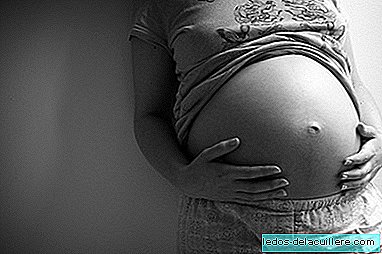
By the eighth month, the part of the baby that will appear first through the birth canal, usually the head is getting into the pelvis and this fact is commonly known as "the baby is fitting". Sometimes in the breech presentation it is this part that descends and fits into the pelvic bone cavity.
The cephalic position occurs when the head is the part that appears in the upper strait of the pelvis. It is the most frequent form of presentation. Buttocks is when the podic pole is the one that occurs in the pelvis, it is often the next most common presentation. In both positions, the fitting can occur, although we refer to the head as being the most common.
From the medical point of view it is considered that the engagement occurs when the widest part of the head, which usually measures about 9.5 centimeters, has exceeded the upper strait of the pelvis and the most protruding part of the fetal ovoid reaches the Sciatic spines level.
Engagement occurs in the last weeks of pregnancy, usually not before weeks 33 and 34, or does not occur until labor begins. Usually, the baby will already be embedded in the pelvis in position to be born before week 37 or 38, but there are many factors that affect this process.
In women who have already had a child, it does not usually take place before the birth begins.

How will I notice if the baby has fit in?
The fetal descent is usually quite evident, as the belly "low." The pregnant woman notices that the belly descends and leans forward. Although it is also possible that the engagement occurs without the woman noticing, for example if she already had a low belly or has not noticed pressure difficulties in the diaphragm or stomach.
Once the engagement occurs, the pregnant woman usually feels relief from the symptoms related to the pressure caused by the uterus and the fetus on the diaphragm, responsible for the sensation of suffocation or empacho, being able to resume full meals if during the last weeks it was difficult.
In return, the pressure in the bladder and the joints of the pelvis and perineal area increases. Sharp stitches or cramps may be felt when the head of the fetus presses on the base of the pelvis. It could be that the woman feels less balanced, by changing the center of gravity.
The doctor can determine if the fetal head is fitted if in the touch palpates the head of the fetus that is fixed and does not move freely. The tocologists divide the path of the presentation part of the fetus through the pelvis into different planes, the first of which is the highest and the fourth the lowest.
- The foreground is when the head (or buttocks) enters the pelvis
- The background is given when you are halfway
- The third plane is when the engagement occurs
- The fourth plane is when the baby is going out and "crown."
If at the time the labor begins the baby is fit, we can say that it already has a half-way back, although this does not imply that the delivery goes faster than in the case of unadjusted fetuses, as many other factors intervene in The duration of the final phase.
Definitely, the fitting is the fetal descent that usually occurs when the birth approaches. In a few days or weeks, the great moment will come and the baby will finally be born.












